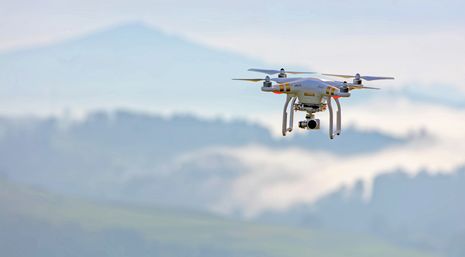Cambridge researchers develop technology to predict drone flight paths
Researchers hope their solution will reduce disruption to crowded airspaces

Researchers at the University of Cambridge have developed a way to predict a drone’s flight path and its intent. The software-based solution aims to make drone flying safer and to reduce its disruption to crowded airspaces.
The scientists use radar data to single out drones that intend to enter restricted air territories or possess unusual flying patterns, identifying them as potential threats to other aircraft. Warnings are then issued to incoming flights to avoid collisions and casualties.
This approach could help prevent incidents similar to that at Gatwick Airport in 2018, when reported drone sightings near the airspace resulted in hundreds of disrupted flights.
Dr Bashar Ahmad, who assisted with the research while at the Department of Engineering, stated that the Gatwick incident “highlighted the potential risk drones can pose to the public if they are misused, whether [it is] done maliciously or completely innocently.”
Ahmad continued that it is “crucial for future drone surveillance systems to have predictive capabilities for revealing, as early as possible, a drone with malicious intent or anomalous behaviour.”
The approach presents a cost-effective solution through “automated decision-making” reducing the workload on drone surveillance operators with “new predictive capabilit[ies].”
The researchers also claimed that their innovations can be applied in other areas like “maritime safety, robotics and self-driving cars”.
The research findings were presented earlier this week (15/09) at the Sensor Signal Processing for Defence (SSPD) Conference, which took place at the Royal College of Physicians in Edinburgh.
 Comment / Plastic pubs: the problem with Cambridge alehouses 5 January 2026
Comment / Plastic pubs: the problem with Cambridge alehouses 5 January 2026 News / Cambridge businesses concerned infrastructure delays will hurt growth5 January 2026
News / Cambridge businesses concerned infrastructure delays will hurt growth5 January 2026 News / New movement ‘Cambridge is Chopped’ launched to fight against hate crime7 January 2026
News / New movement ‘Cambridge is Chopped’ launched to fight against hate crime7 January 2026 News / AstraZeneca sues for £32 million over faulty construction at Cambridge Campus31 December 2025
News / AstraZeneca sues for £32 million over faulty construction at Cambridge Campus31 December 2025 Interviews / You don’t need to peak at Cambridge, says Robin Harding31 December 2025
Interviews / You don’t need to peak at Cambridge, says Robin Harding31 December 2025










